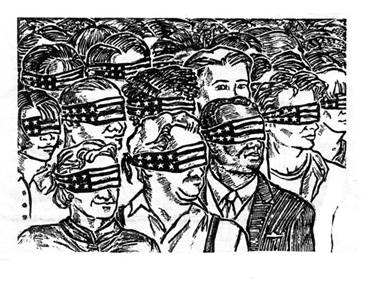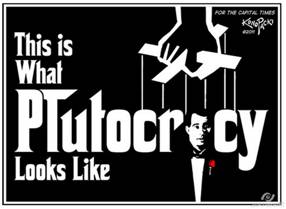Nov 13
20160
Avaaz, MoveOn.org, Neo-Liberalism and the Defanging of Feminism, Social Engineering, Whiteness & Aversive Racism
United Against Hate or Hate Being United?
November 13, 2016
by Cory Morningstar with Forrest Palmer
If Americans are seriously “united against hate” – why haven’t they united across the country against the murder/occupation/destabilizations of Haitians, Syrians, Libyans, Iraqis, Yemenis, etc. etc. – all carried out/expanded under the democrats? Trump hates and it’s ugly. Obama and Clinton kill but it’s beautiful and heroic – glazed over and black-washed by the imperial liberal left and black bourgeoisie.
One can say without hesitation that MoveOn.org (co-founder of Avaaz) has absolutely seized the opportunity to drum up democratic support while gathering further aid and loyalty to their own brand. One can say the same for Change.org (a for-profit NGO that collects and sells data via online petitions). Where coloured revolutions financed by the U.S. have always occurred on foreign soil, the current uprising against Trump (sparked by NGOs) is not only unprecedented, but quite different. A coloured revolution is usually carried out to overthrow a leader that is not complying to the dictates of imperialist states to some or full extent. But in this case, both Trump and Clinton (if she had been elected) will fully serve the elites to the extent of their power. Both will serve imperialism as imperialism is the foundation of the “American dream” (in reality a nightmare). Neither will serve the people. Both will accelerate the ongoing destruction of the planet at breakneck speed.
Trump is no Chavez. Trump is appalling. Clinton is no Kirchner. Clinton is a monster. What is fascinating is that there was no public outrage directed at Obama, the likes of which we are now seeing directed at Trump. Nor, if Clinton were elected, would we see any such display of outrage directed toward her. Hatred toward Trump is easily understood. But where was/is the hatred and disdain toward Obama and Clinton? Why is the imperial liberal left blind to the blatant racism and murder carried out by the Democrats under the Obama administration? Is the imperial liberal left simply happy to turn a blind eye if charisma and political correctness can hide the ugly truth, realities and facts? Why do Americans still believe in elections when living under a fascist corporatocracy?
Image: The Slow Burning Fuse
In summary: MoveOn et al created the spark for protests (MoveOn organizing 200 protests across the nation within a 2-hour time frame) – but it was easy to ignite because of the hatred (self-inflicted by the way) of Trump. The liberal masses were the powder keg. Trump was the fuse. The spark was lit during the election season. The lit fuse hit the powder keg on election night. Now, in unison, the NGOs that comprise the non-profit industrial complex reverberate the following messages in the echo-chamber (insert the name of any NGO where the name Avaaz appears.): “To win this fight, we need to be bigger and stronger, to deepen our connection and commitment. So today, we launch our first formal membership drive. Click below to become an Avaaz member, and let’s get serious about $aving the world.”
[“MoveOn.org Civic Action is a 501(c)(4) organization which primarily focuses on nonpartisan education and advocacy on important national issues. MoveOn.org Political Action is a federal political committee which primarily helps members elect candidates who reflect our values through a variety of activities aimed at influencing the outcome of the next election. MoveOn.org Political Action and MoveOn.org Civic Action are separate organizations.”]
[Cory Morningstar is an independent investigative journalist, writer and environmental activist, focusing on global ecological collapse and political analysis of the non-profit industrial complex. She resides in Canada. Her recent writings can be found on Wrong Kind of Green, The Art of Annihilation and Counterpunch. Her writing has also been published by Bolivia Rising and Cambio, the official newspaper of the Plurinational State of Bolivia. You can support her independent journalism via Patreon.]
[Forrest Palmer is an electrical engineer residing in Texas. He is a part-time blogger and writer and can be found on Facebook. You may reach him at forrest_palmer@yahoo.com.]






 Aerial bombing campaigns make U.S. wars for regime change in Afghanistan, Iraq, Libya and Syria highly visible and absolutely undeniable, but the corporate and state press don’t describe U.S. sponsored wars in Africa as such if they talk about them at all. Millions of African people have nevertheless lost their lives or seen their lives destroyed in U.S. sponsored wars for regime change and natural resources in Africa.
Aerial bombing campaigns make U.S. wars for regime change in Afghanistan, Iraq, Libya and Syria highly visible and absolutely undeniable, but the corporate and state press don’t describe U.S. sponsored wars in Africa as such if they talk about them at all. Millions of African people have nevertheless lost their lives or seen their lives destroyed in U.S. sponsored wars for regime change and natural resources in Africa.



















